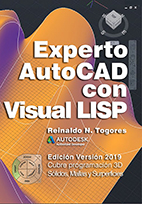by Reinaldo N. Togores.
Experimental School for the Plastic Footwear Factory, 236 Ermita Street between Lombillo and San Pedro Streets. Multipurpose room.
Back in the late '60s a densely populated zone near Havana’s administrative center was selected for the installation of a new plastic shoe factory. This decision was based on the possibility of its operating mainly with nearby available female labor. Hence it was necessary to provide for the small children's care during working hours, including night shifts. This task was to be met by a school which made use of a neighboring church's building which was ceded for that purpose by its parish priest, Father Sardiñas. But this service should be extended to children in the pre-school ages. It was then decided to profit from this opportunity by realizing a first experience in an integrated school-nursery incorporating, to the three grades of primary school’s first cycle, the previous -and up to now autonomous- stage including from babies to kindergarten age children. Several advantages were expected from this kind of organization. Among them, the prevention of the frequent adaptation problems arising in children from the existing nurseries on beginning primary school. It was also hoped that contact with older children and the normal desire to rival theirfeats would act as a powerful incitement for the smaller ones' intellectual development. This plan called for extensive reforms in the existing school building, and it was felt that new and more adequate furniture was also needed. Sanitary statistical controls, kept since the Revolution came into power, showed the incidence of skeletal malformations in children which could be directly traced to the use of inadequate school furniture. Preventing bone damage through correct design and dimensioning was the first demand posed to the designers. Among other steps in this direction, the usual "palette" chair providing only a wide area for writing on the right armrest was discarded, as some of the worst injuries were imputed to its use. The tables' height was reduced so as to favor a normal position of the shoulders when writing and to do so it was found necessary to suppress the accustomed storage space for books under the table tops. Substitute space was provided in a modular storage system. The variety in chair and table sizes was increased according to biometric samplings. The solution for materials and manufacturing processes was seen as a first experience towards the development of school equipment standards. To each age group, a furniture series corresponds, which is conceived in terms of that group's specific requirements. Special mention should be made of the “Jigsaw” furniture used by the younger ones. Based on a small number at parts, an assortment of chairs, desks, rocking chairs and doll cradles could be built. In them the child discovered an outlet for action: first decomposing them into their basic structural components and, later on, reassembling these components into any other of the possible solutions. Thus begins the training of manual skills which, in due time, will lead to the metal and wood-working tasks in the manual training workshop. As a solution to classroom storage problems, a modular system was devised, based on curved steel tube supporting elements; particle-board shelves, book racks, and boxes -either with drawers or adjustable shelves- to which doors may be added; and plastic laminated work counters, all or which are combined according to each grade's demands. Though the system was designed in accordance to children's scale, it could also be built up to provide some storage space well out of their reach, intended for the teacher's exclusive use. As a whole, this furniture program's main feature is a versatility that makes its use in different environments possible. This is an essential characteristic in account of a school system in which courses include a wide range of individual and group activities. The traditional classroom scheme is thus destroyed in favor of the pupil's growing involvement in simple tasks and experiences undertaken under the teacher's supervision, but in which “discovering by themselves” is the main educative mechanism. After this experience other two other experimental schools were designed, one in Biran and the other for the Cienfuegos City fisherman's cooperative. School for the fisherman's cooperative in Cienfuegos. Besides the furniture, a sliding panels system that allow to modify the distribution of teaching spaces was designed. |
- Furniture Design: María Teresa Muñiz Riva and Mariano Vico.
- Mural Graphics: Juan Antonio Gómez (Tito).
This article was published originally in the Arquitectura/Cuba Magazine Number 339, 1971














